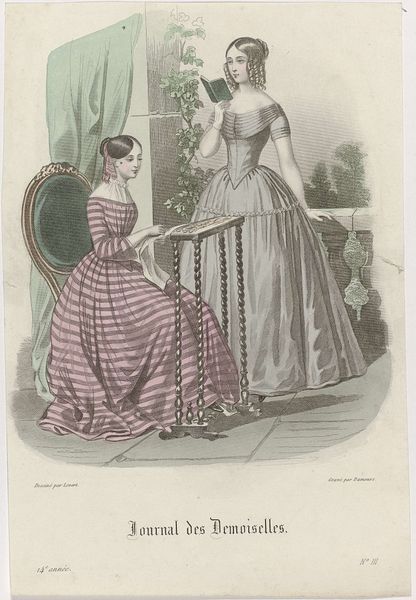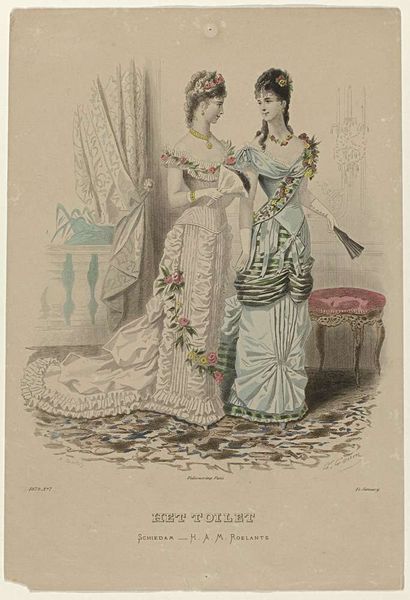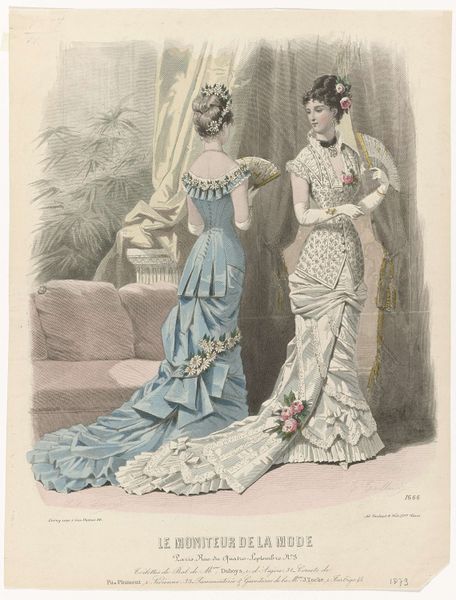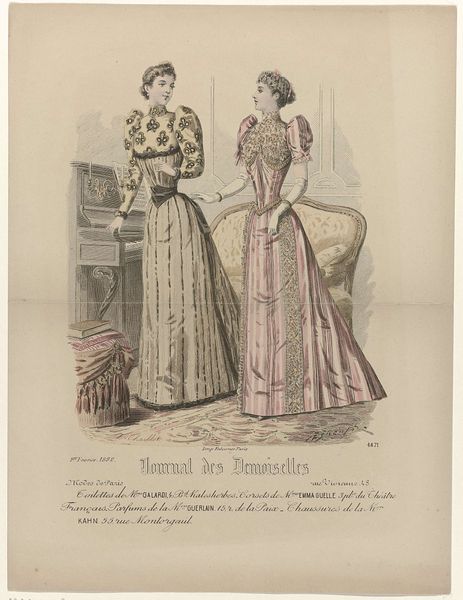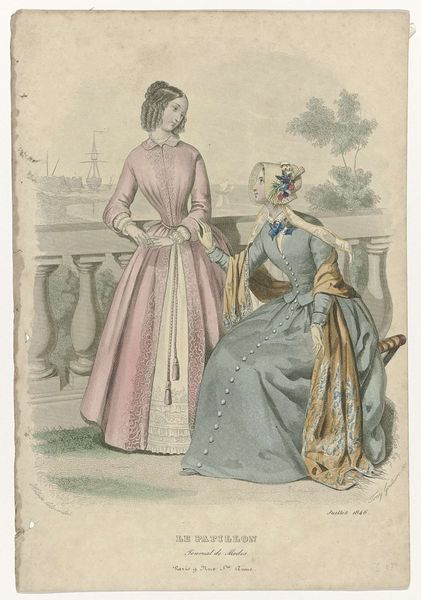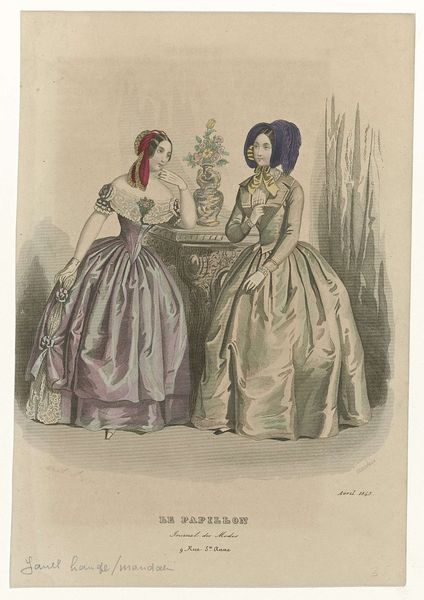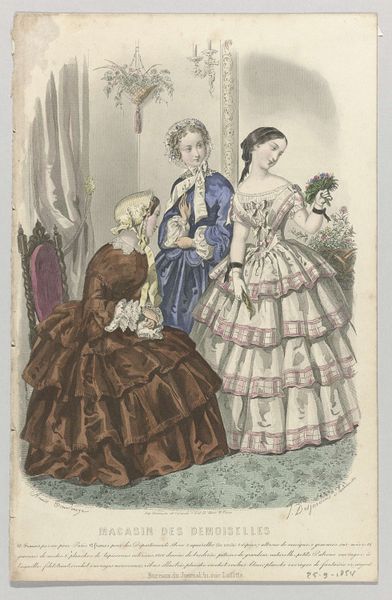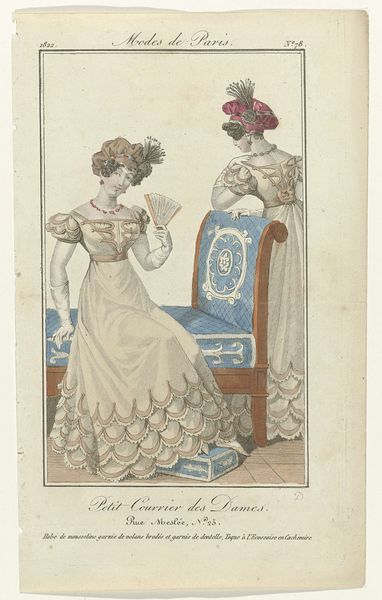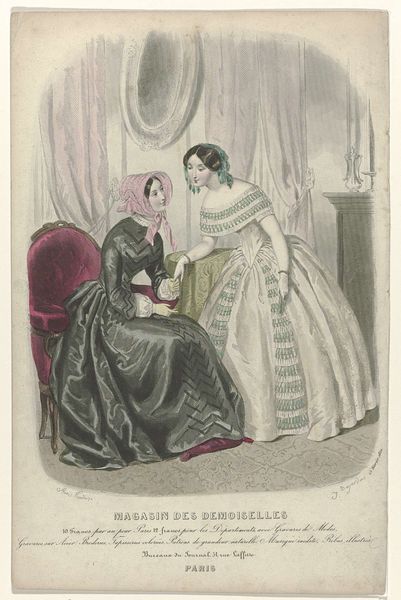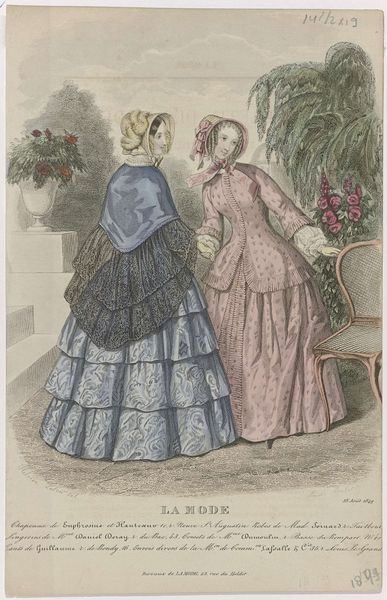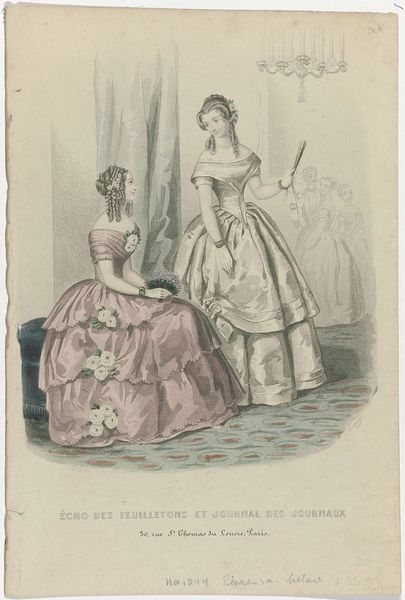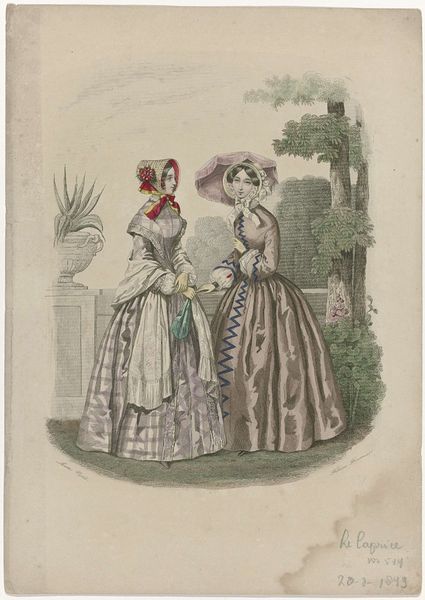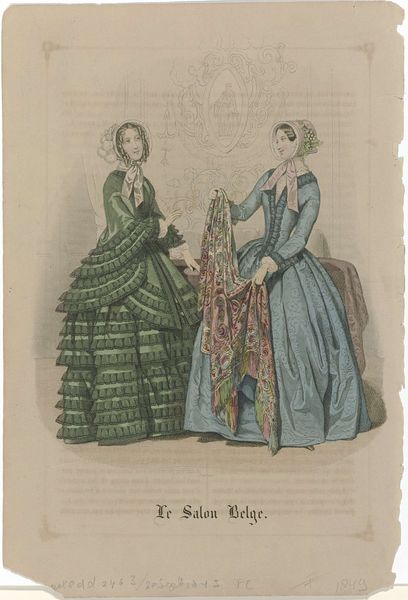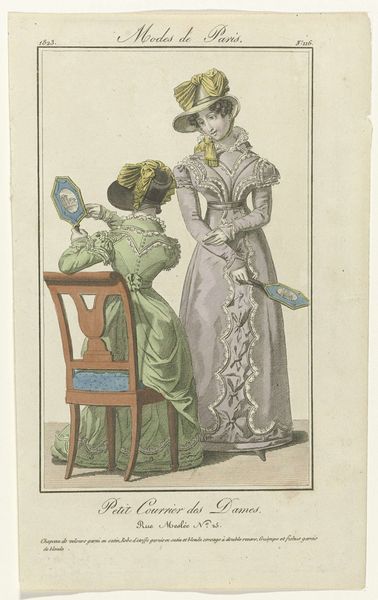
Journal des Jeunes Personnes, janvier 1840 : Robe de mousselin (...) 1840
0:00
0:00
Dimensions: height 229 mm, width 138 mm
Copyright: Rijks Museum: Open Domain
Editor: This watercolor, "Journal des Jeunes Personnes, janvier 1840," from an anonymous artist, depicts two women in beautiful dresses. I’m struck by the delicate rendering and the focus on fashion. What do you see in this piece beyond just a depiction of clothing? Curator: This image, seemingly just a fashion plate, speaks volumes about the construction of femininity in the 19th century. Who are these 'jeunes personnes'? What opportunities are afforded to them? Consider the gaze: one woman faces outward, poised, almost a commodity on display. The other arranges flowers, a carefully cultivated, passive pursuit deemed suitable for young women. It presents an ideal of womanhood intertwined with appearance, domesticity and performativity. What is normalized in this presentation, and who is excluded? Editor: So, it's not just about the dresses themselves, but about what they represent in terms of societal expectations? Curator: Precisely. This "Journal des Jeunes Personnes" isn't just informing young women what to wear; it's prescribing how to *be*. Rococo sensibilities persist in the ornamentation, in the hyper-feminine, hyper-delicate details which reinforce limited gender roles. Do you see how the emphasis on appearance potentially silences other avenues for self-expression? Where are their voices, their ambitions, their intellectual pursuits reflected here? Editor: I see what you mean. It's like the image is setting the stage for a very specific kind of female performance. Curator: Exactly. And by understanding the historical and social context, we can begin to critically analyze the underlying power structures at play. We might ask ourselves: who benefits from these representations, and whose narratives are being erased? Editor: That gives me a lot to think about. I originally saw a pretty picture, but now I see a complex statement about gender and society. Curator: Excellent. The beauty is undeniable, but the deeper value lies in deciphering the cultural codes embedded within. It pushes us to question what is being normalized and what voices remain unheard.
Comments
No comments
Be the first to comment and join the conversation on the ultimate creative platform.
